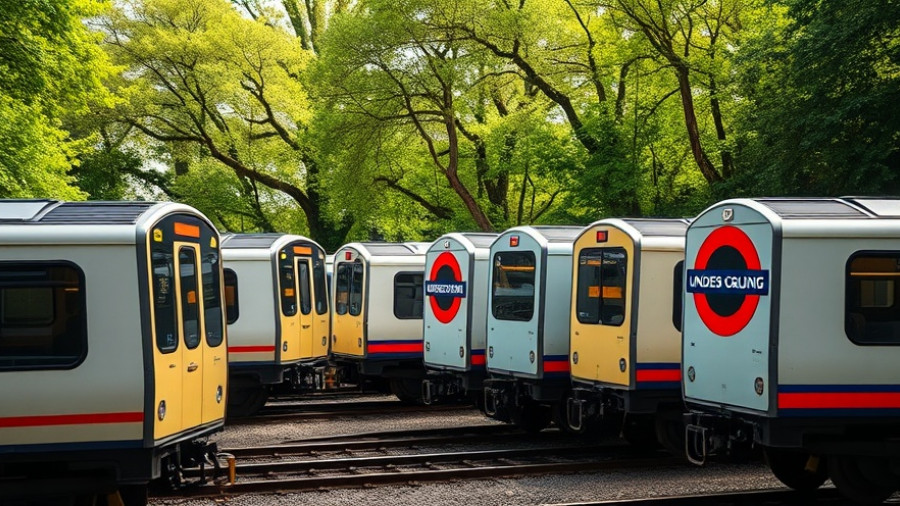
A Night of Violence: Stabbing in East London
In the early hours of July 18, a distressing incident unfolded in East London, where a man in his 20s was stabbed multiple times on North Woolwich Road, just a stone's throw from the bustling West Silvertown DLR station. Reports indicate that the police received calls around 1 AM, noting the presence of a group of men with knives in the area. Emergency services rushed to the scene, where they found the victim suffering from serious stab wounds. Thanks to prompt medical attention from paramedics, he was taken to the hospital, and fortunately, the injuries are not expected to leave permanent damage.
Crime Wave: Understanding the Rise in Stabbing Incidents
This incident is not an isolated occurrence; rather, it marks the eighth stabbing reported since Monday alone. The alarming trend has raised serious concerns among East London residents. The Metropolitan Police have been proactive, appealing to the public for information related to the crime, urging anyone who may have pertinent details or footage to come forward. Community involvement is crucial for addressing this string of knife crimes, and authorities are encouraging reporting through 101 or anonymously via Crimestoppers at 0800 555 111.
The Bigger Picture: What’s Behind the Surge in Knife Crime?
The current spike in stabbings across London reflects broader societal issues. Experts and community leaders are calling for a multifaceted approach to combat knife crime, which involves not just policing but addressing the root causes: poverty, lack of youth engagement, and education are all factors contributing to this alarming trend. Recent events, including a brawl in Croydon resulting in multiple injuries, suggest a pressing need for community initiatives aimed at diverting youth from gang involvement and violence.
Community Resilience: How Londoners are Coming Together
In light of these violent incidents, many London residents are advocating for community cohesion. Initiatives such as local safety forums, youth engagement programs, and neighborhood watch schemes are being discussed as potential solutions. Local governments and nonprofits are seeking to provide resources and support for at-risk youth, emphasizing meaningful activities that can steer them away from violence. The community is mobilizing through workshops and discussions on how to create safer environments for all residents.
Actionable Steps: What Can Residents Do?
Residents have a pivotal role in combatting local violence. Engaging in community watch programs, building networks with neighbors, and participating in local forums can create a collective voice against crime. Additionally, discussing personal safety plans and encouraging the use of technology, like social media for reporting suspicious activities, can enhance public safety. Moreover, being aware of local resources, such as crisis intervention centers and mental health services, can aid those in distress.
Moving Forward: The Path Towards a Safer Community
The stabbing of the young man in East London serves as a sobering reminder of the violence plaguing urban areas today. Yet, it also sheds light on community resilience and the possibilities for positive change. By fostering dialogue, strengthening community ties, and advocating for local initiatives, residents can work towards transforming their neighborhoods into safe havens.
Final Thoughts
As London grapples with rising violence, it’s vital for local residents to remain informed and connected. Whether through social media discussions or local meetings to strategize solutions, every action counts. To stay in the loop about such incidents and community initiatives, consider subscribing to local news updates and engaging in conversations that can lead to impactful changes.
 Add Row
Add Row  Add
Add 




Write A Comment